April 22, 2021
Indian Novels Collective
Listicle
Six books that address environmental issues in Indian literature
Observed every year on 22 April, Earth Day was first organised in 1970 to promote ecology and raise awareness of the growing problems of air, water, and soil pollution. In the light of current environmental concerns manifesting as the unprecedented deterioration of our planet’s biodiversity, it becomes even more significant that we understand the gravity and urgency of the worsening climate crisis. Indian literature has shed light upon the life-changing perils of natural calamities, even before ‘climate fiction’ or ‘ecocriticism’ as a genre became a part of our literary preoccupations.
In Indian novels, we have often encountered how the socio-political realities play out against the overarching backdrop of environmental depredation, establishing that you cannot grapple with the consequences of a crisis in isolation. Showcasing how the social and ecological realities are deeply interconnected, here’s a mix of six novels that provide introspection and engagement on the issue.
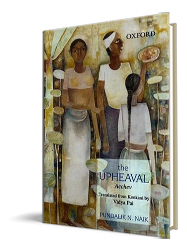
Konkani
Acchev by Pundalik Naik
Critiquing the expansion of the iron ore mining industry, Pundalik Naik’s celebrated debut novel Acchev (1977) details how the industry contaminated the Mandovi and the village Kolamba. Set in Ponda district in north Goa, the book provides a visceral picture of a massive environmental catastrophe by showing how the onslaught of industrialisation stripped the land of its natural flora and fauna while giving rise to diseases like tuberculosis. The novel also reflects on how the sociological framework and the indigenous culture of Kolamba were negatively impacted, as the shift started from agriculture to mining as a mode of occupation. Acchev is also the first Konkani novel to be translated as The Upheaval by Vidya Pai.
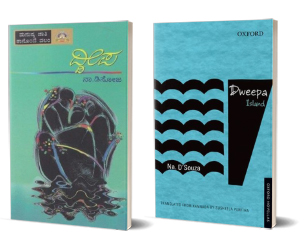
Kannada
Dweepa by N.A. D’Souza
First published in a weekly in 1970, Dweepa by N.A. D’Souza documents the displacement of farmers and the submersion of their land. Focusing on the construction of the Linganamakki dam on River Sharavathi in Karnataka, the novel portrays how countless villages were submerged due to the rising water level, followed by the loss of lifestyle and traditional values that had sustained communities in the Malnad region. Translated from Kannada by Susheela Punitha as Dweepa: Island, the novella also voices the travails of the dispossessed, who are forced to become the collateral damage of progress and development.

Bengali
Byadhkhanda by Mahasweta Devi
Published in 1994, Mahasweta Devi’s novel explores the cultural values of the hunter tribes, the Shabars—who were declared a ‘criminal’ tribe by the British in 1871—a stigma that continues to oppress the community in contemporary times. Focusing on the slow erosion of their lives due to the rapid clearing of the forest lands, the novel shows how ‘mainstream’ settlements violently encroach upon the hunting lands and homes of the tribals, in addition to the delicate equilibrium of nature itself. Translated as The Book of the Hunter, it is a powerful plea to understand how the indigenous communities and natural environs continue to be disproportionately affected by unethical and unchecked urbanisation.
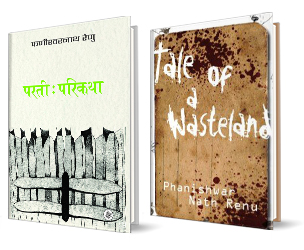
Hindi
Parti Parikatha by Phanishwar Nath Renu
Published in 1957, Parti Parikatha—acclaimed Hindi writer Phanishwar Nath Renu’s second novel—unfolds against the backdrop of a newly-independent India. Set across the volatile Kosi river close to the India-Nepal border, the book focuses on the vast tracts of land in the Paranpur village, rendered barren due to the perennial flooding of the Kosi river every monsoon. Environmental consciousness goes hand in hand with sustainable developmental spirit—and this finds its representation through protagonist Jittan, who works with the villagers to increase fertile land for agriculture. Animated with myths and the variegated voices of the village’s cultural heritage, Parti Parikatha also establishes how ecological harmony and the well-being of the local community are inextricably linked. It is also available in an English translation as Tale of a Wasteland.
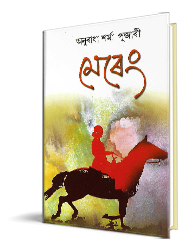
Assamese
Mereng by Anuradha Sharma Pujari
Based on the eventful life of Indira Miri, fondly known as ‘Mereng’—one of the torchbearers of education in Northeast India during the British era—the novel stands out in its lush description of the natural world when the setting shifts to the Kaziranga Forest Reserve after Indira’s marriage. It covers the earthquake that hit Northeast India in the 1950s and vividly portrays its enormous scale of devastation wrought upon the natural topography, infrastructure and the local inhabitants of Sadiya, the village in which Indira was posted as the Chief Education Officer of NEFA (North-East Frontier Agency). While celebrating Indira’s indomitable spirit—who helped rebuild the village from scratch—the novel also underscores how the ever-changing aspects of nature have found a place in Assamese literature.
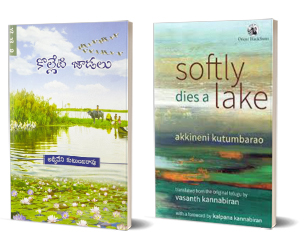
Telugu
Kolleti Jaadalu by Akkineni Kutumbarao
The novel vividly brings alive the travails of villagers whose lives are woven inseparably with Kolleru, one of India’s largest freshwater lakes located in Andhra Pradesh. It also portrays how they find ways to survive when floods strike year after year without any substantial governmental aid. Narrated through the eyes of five-year-old Seenu, the novel details a vital but lost way of life, brutally destroyed as the market ultimately triumphs over the ecological environment. Translated as Softly Dies a Lake, this book serves as a poignant reminder of how we have contributed towards endangering our coexistence with nature and is a must-read for everyone who feels responsible for their only home: the earth.
Which Indian novels have made a meaningful impact in terms of creating consciousness about the need for environmental preservation in your mind? Tell us in the comments below.
Latest Article
- As we celebrate our 75th year of Independence, take time out to read an excerpt from Vishram Bedekar’s ‘Ranaangan’
- ‘A translation of this beautifully written literary work helps us bring connections across cultures and helps us see the work in a new light.’
- Battlefield by Vishram Bedekar
A Reader’s View - Starting point for exploring Telugu short stories
- A book a day keeps anxiety at bay
- 15 Indian language women writers who should feature on your reading list